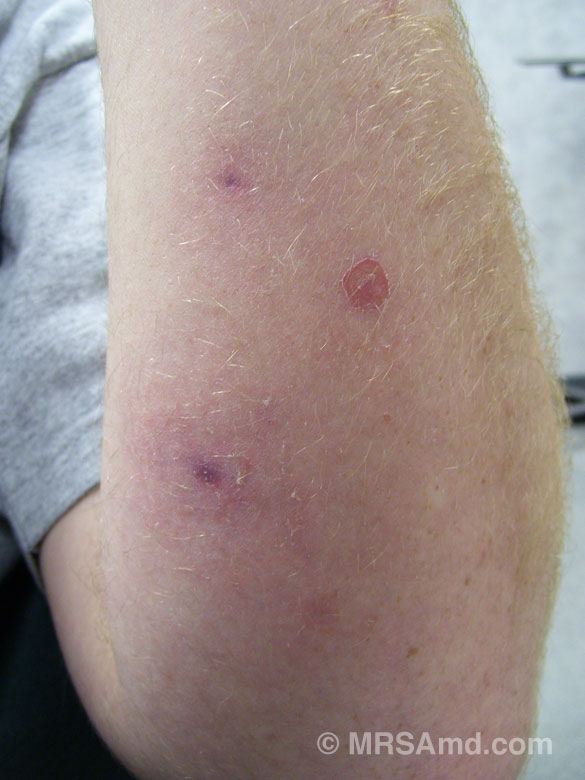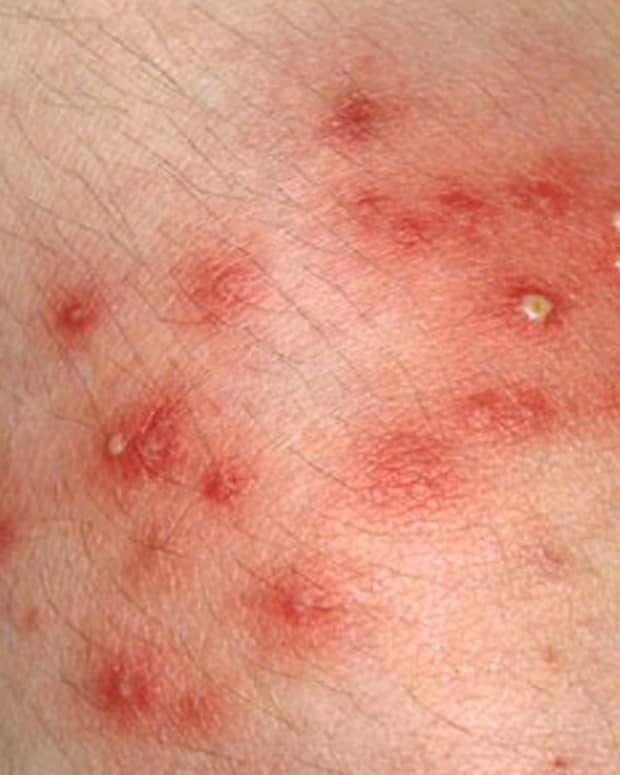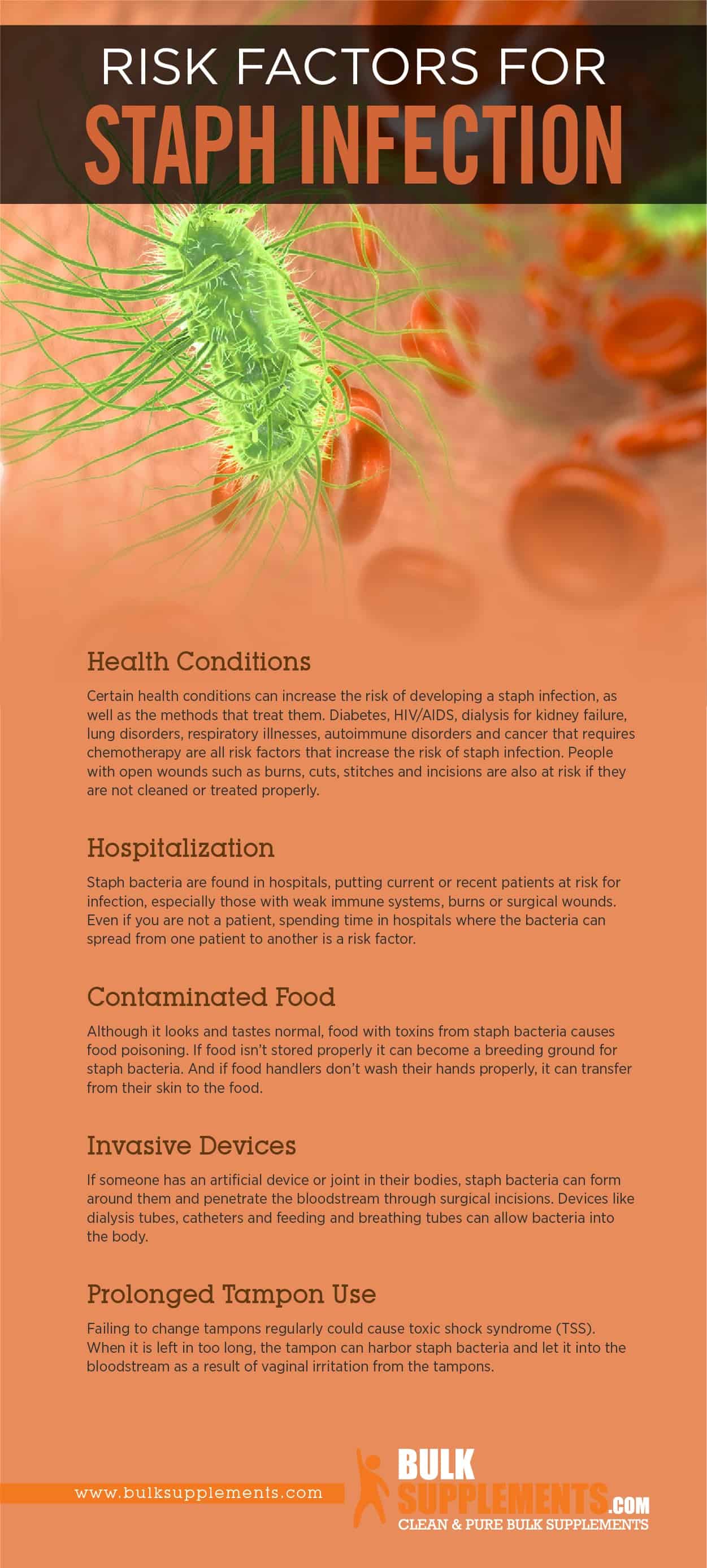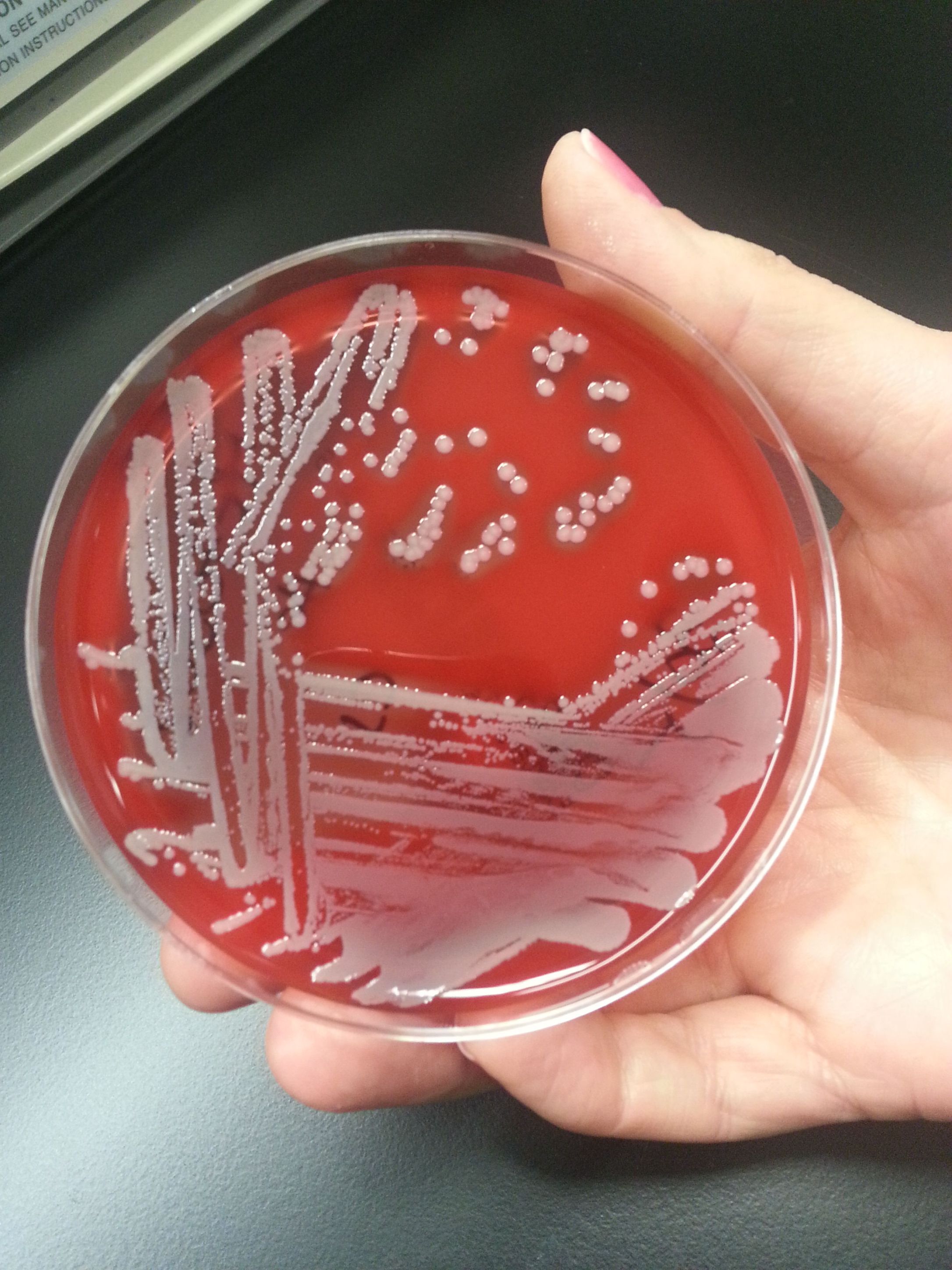Learn about staph infections, which are caused by bacteria that can affect the skin and internal organs. Find out how to prevent, diagnose, and treat them, and what are the risk factors and complications.
Staph can cause infection when they enter the skin through a cut or sore. Infection can also occur when the bacteria move inside of the body through a catheter or breathing tube. Measles Cases on the Rise . Several states are reporting cases of measles, a highly contagious viral disease. Both children and adults can get measles.
Staphylococcus aureus (staph) is a type of germ that about 30% of people carry in their noses. Most of the time, staph does not cause any harm, but it can sometimes cause infections. Some types of Staphylococcus aureus are resistant to common antibiotic treatments.
Staph infection Staph infections are caused by bacteria called staphylococcus. They most often affect the skin. They can go away on their own, but sometimes need to be treated with antibiotics.
Staph infection is a common bacterial infection caused by staphylococcus bacteria. It can affect the skin or the internal organs and be treated with antibiotics or other methods. Learn about the types, symptoms, diagnosis, and prevention of staph infection.
Staph can cause infection when they enter the skin through a cut or sore. Infection can also occur when the bacteria move inside of the body through a catheter or breathing tube. Measles Cases on the Rise . Several states are reporting cases of measles, a highly contagious viral disease. Both children and adults can get measles.
Staphylococcus aureus (staph) is a type of germ that about 30% of people carry in their noses. Most of the time, staph does not cause any harm, but it can sometimes cause infections. Some types of Staphylococcus aureus are resistant to common antibiotic treatments. Staph infection Staph infections are caused by bacteria called staphylococcus. They most often affect the skin.
They can go away on their own, but sometimes need to be treated with antibiotics. Staph infection is a common bacterial infection caused by staphylococcus bacteria. It can affect the skin or the internal organs and be treated with antibiotics or other methods. Learn about the types, symptoms, diagnosis, and prevention of staph infection.
Staphylococcus (staph) infections are common bacterial infections. There are more than 30 types of staph organisms that can make people ill. Infections caused by Staphylococcus aureus (S. aureus) are the most common.Many people carry staph bacteria on their skin and in their noses, but if they are healthy and have no open wounds, they usually never get sick.
Learn about staph infection causes, symptoms, treatment, and prevention. Find out how to recognize and treat cellulitis, a type of staph infection that affects the skin's deeper layers.
Learn how to diagnose and treat staph infections, which can affect your skin, heart or other organs. Find out about antibiotic resistance, wound drainage, device removal and more.
Staphylococcus aureus is a major bacterial human pathogen that causes a wide variety of clinical manifestations.[1] Infections are common both in community-acquired as well as hospital-acquired settings and treatment remains challenging to manage due to the emergence of multi-drug resistant strains such as MRSA (Methicillin-Resistant Staphylococcus aureus).[2][3] S. aureus is found in the
Staphylococcus aureus Infection - StatPearls - NCBI Bookshelf
Staphylococcus (staph) infections are common bacterial infections. There are more than 30 types of staph organisms that can make people ill. Infections caused by Staphylococcus aureus (S. aureus) are the most common.Many people carry staph bacteria on their skin and in their noses, but if they are healthy and have no open wounds, they usually never get sick. Learn about staph infection causes, symptoms, treatment, and prevention.
Find out how to recognize and treat cellulitis, a type of staph infection that affects the skin's deeper layers. Learn how to diagnose and treat staph infections, which can affect your skin, heart or other organs. Find out about antibiotic resistance, wound drainage, device removal and more. Staphylococcus aureus is a major bacterial human pathogen that causes a wide variety of clinical manifestations.[1] Infections are common both in community-acquired as well as hospital-acquired settings and treatment remains challenging to manage due to the emergence of multi-drug resistant strains such as MRSA (Methicillin-Resistant Staphylococcus aureus).[2][3] S. aureus is found in the
Learn how staphylococcus bacteria can cause minor or serious infections on your skin or inside your body. Find out how to avoid staph and when to see a doctor.
The bacteria Staphylococcus aureus causes the most infections. There are also several strains of S. aureus . These strains can cause different infections and need to be treated with different
Staph infections used to be cured by many antibiotics. Now many types of staph have become resistant to all but the strongest antibiotics. Staph that can't be cured by one group of common antibiotics is called MRSA (methicillin-resistant Staphylococcus aureus).MRSA and other even more resistant types of staph are becoming more common, especially in hospitals.
A staph infection happens when the bacteria get into your body — usually through a break in your skin. A staph infection can affect many different parts of your body and can cause other problems, including: Bacteremia (infection in your bloodstream) Cellulitis (deep skin infection) Endocarditis (infection of your heart's lining)
Staph Infection | Infectious Diseases - UC Davis Health
Learn how staphylococcus bacteria can cause minor or serious infections on your skin or inside your body. Find out how to avoid staph and when to see a doctor. The bacteria Staphylococcus aureus causes the most infections. There are also several strains of S. aureus .
These strains can cause different infections and need to be treated with different Staph infections used to be cured by many antibiotics. Now many types of staph have become resistant to all but the strongest antibiotics. Staph that can't be cured by one group of common antibiotics is called MRSA (methicillin-resistant Staphylococcus aureus).MRSA and other even more resistant types of staph are becoming more common, especially in hospitals. A staph infection happens when the bacteria get into your body — usually through a break in your skin. A staph infection can affect many different parts of your body and can cause other problems, including: Bacteremia (infection in your bloodstream) Cellulitis (deep skin infection) Endocarditis (infection of your heart's lining)
What are Staphylococcal (staph) infections? Staphylococcus (staph) is a group of bacteria. There are more than 30 types. A type called Staphylococcus aureus causes most infections. Staph bacteria can cause many different types of infections, including: Skin infections, which are the most common types of staph infections.
Staph infections are contagious until the infection has resolved. Direct contact with an infected sore or wound, or with personal care items such as razors, bandages, etc., are common routes of transmission.Casual contact such as kissing or hugging does not pose a great risk for transmission if there is no direct contact with the infected area.
Learn about staph infections, which are caused by staphylococcus bacteria that can affect your skin, blood, organs and more. Find out the signs, causes, risk factors, complications and prevention of staph infections.
A staph infection in food usually doesn't cause a fever. Signs and symptoms you can expect with this type of staph infection include: Nausea and vomiting; Diarrhea; Dehydration; Low blood pressure; Bacteremia. Also known as a bloodstream infection, bacteremia occurs when staph bacteria enter the bloodstream.
Staph infections - Symptoms and causes - Mayo Clinic
What are Staphylococcal (staph) infections? Staphylococcus (staph) is a group of bacteria. There are more than 30 types. A type called Staphylococcus aureus causes most infections. Staph bacteria can cause many different types of infections, including: Skin infections, which are the most common types of staph infections.
Staph infections are contagious until the infection has resolved. Direct contact with an infected sore or wound, or with personal care items such as razors, bandages, etc., are common routes of transmission.Casual contact such as kissing or hugging does not pose a great risk for transmission if there is no direct contact with the infected area. Learn about staph infections, which are caused by staphylococcus bacteria that can affect your skin, blood, organs and more. Find out the signs, causes, risk factors, complications and prevention of staph infections. A staph infection in food usually doesn't cause a fever.
Signs and symptoms you can expect with this type of staph infection include: Nausea and vomiting; Diarrhea; Dehydration; Low blood pressure; Bacteremia. Also known as a bloodstream infection, bacteremia occurs when staph bacteria enter the bloodstream.
Learn about staph infection, a common bacterial infection that can affect your skin and other parts of your body. Find out how to prevent, diagnose and treat staph infection with antibiotics and other methods.
Staphylococcus aureus is a major bacterial human pathogen that causes a wide variety of clinical manifestations.[1] Infections are common both in community-acquired as well as hospital-acquired settings and treatment remains challenging to manage due to the emergence of multi-drug resistant strains such as MRSA (Methicillin-Resistant Staphylococcus aureus).[2][3] S. aureus is found in the
Staphylococcus bacteria (also termed staph) are responsible for a number of common infections. Staphylococcus is a genus of bacteria that is characterized by a round shape (coccus or spheroid shaped), Gram-stain positive, and found as either single cells, in pairs, or more frequently, in clusters that resemble a bunch of grapes The genus name Staphylococcus is derived from Greek terms
Learn about the different types, symptoms, and stages of staph infection, a common bacterial skin infection. See photos of staph infection sores, abscesses, and complications.
Staph Infection Stages: Pictures and Symptoms - Verywell Health
Learn about staph infection, a common bacterial infection that can affect your skin and other parts of your body. Find out how to prevent, diagnose and treat staph infection with antibiotics and other methods. Staphylococcus aureus is a major bacterial human pathogen that causes a wide variety of clinical manifestations.[1] Infections are common both in community-acquired as well as hospital-acquired settings and treatment remains challenging to manage due to the emergence of multi-drug resistant strains such as MRSA (Methicillin-Resistant Staphylococcus aureus).[2][3] S. aureus is found in the Staphylococcus bacteria (also termed staph) are responsible for a number of common infections. Staphylococcus is a genus of bacteria that is characterized by a round shape (coccus or spheroid shaped), Gram-stain positive, and found as either single cells, in pairs, or more frequently, in clusters that resemble a bunch of grapes The genus name Staphylococcus is derived from Greek terms Learn about the different types, symptoms, and stages of staph infection, a common bacterial skin infection.
See photos of staph infection sores, abscesses, and complications.
Most commonly, staph infections are caused by a specific staph bacteria in that group called Staphylococcus aureus. A staph infection begins when staph bacteria enters your body, usually through a cut or an open sore. The severity of the infection depends on certain risk factors, the strength of the bacteria, where you're infected and how
Staphylococcal (staph) infection is caused when bacteria called Staphyloccocus enters the body, usually through a skin cut or wound. Staphyloccocus aureus is the most common type to infect humans, though there are more than 30 others. While staph normally lives in the nose or on the skin of some healthy individuals without consequence, infections can cause abscesses, cellulitis, or other skin
The symptoms of a staph infection depend on where the bacteria spread. Skin and tissue staph infections are the most common, though staph can also spread to your blood, heart, or other organs
Staphylococcus aureus infections range from mild to life threatening The most common staphylococcal infections are . Skin infections, often causing abscesses. However, the bacteria can travel through the bloodstream (called bacteremia) and infect almost any site in the body, particularly heart valves (endocarditis) and bones (osteomyelitis) The bacteria also tend to accumulate on medical
Staphylococcus aureus Infections - Infections - Merck Manual Consumer
Most commonly, staph infections are caused by a specific staph bacteria in that group called Staphylococcus aureus. A staph infection begins when staph bacteria enters your body, usually through a cut or an open sore. The severity of the infection depends on certain risk factors, the strength of the bacteria, where you're infected and how Staphylococcal (staph) infection is caused when bacteria called Staphyloccocus enters the body, usually through a skin cut or wound. Staphyloccocus aureus is the most common type to infect humans, though there are more than 30 others. While staph normally lives in the nose or on the skin of some healthy individuals without consequence, infections can cause abscesses, cellulitis, or other skin The symptoms of a staph infection depend on where the bacteria spread.
Skin and tissue staph infections are the most common, though staph can also spread to your blood, heart, or other organs Staphylococcus aureus infections range from mild to life threatening The most common staphylococcal infections are . Skin infections, often causing abscesses. However, the bacteria can travel through the bloodstream (called bacteremia) and infect almost any site in the body, particularly heart valves (endocarditis) and bones (osteomyelitis) The bacteria also tend to accumulate on medical




